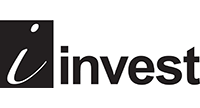With the rise of robotics and AI across industry now accelerating at breakneck speed, i-invest takes a snapshot of the latest data, growth areas, and touches on the human impact
If there’s one thing that industry analysts agree on, it’s the growth of the robot market. Valued at US$47.8bn in 2024 according to GMI, the market is estimated to grow at a compound annual growth rate (CAGR) of 16.6% to reach US$211.1bn by 2034. The host of factors driving this growth include a surge in e-commerce and logistics demands, alongside increasing labour costs, and labour shortages.
Automation within the industrial sector has long been a necessity as industries strive to reduce operational costs and boost efficiency. Game-changing co-bots – collaborative robots that share workspaces with humans – are making automation easier than ever for businesses of all size. For many, co-bots represent the ideal intersection between humans and machines. Successful implementation of co-bots reduces set-up times, offers flexibility in reassigning robots to different applications, and offers a range of human benefits, such as freeing up time in the schedules and relieving workers from ergonomically unfavourable tasks: it’s no longer about return on investment (ROI) but return on comfort (ROC).
Designed for independent tasks, autonomous mobile robots (AMR) are also on the rise, although their growth is less even due to cost of implementation and perceived ROI. Companies with revenues over US$1bn are more likely to use AMRs – how and when to deploy them provides more of a conundrum on an operational level, and also opens the debate about robots taking human jobs.
Depending on the industry, there are a variety of different robot / automation solutions deployed across the world’s warehouses. Companies such as Amazon are channelling significant investment into robotic solutions for managing inventory, fulfilment and delivery. Robots are optimising warehouse operations, reducing picking times, monitoring inventory in real-time and boosting overall efficiency by minimising errors. According to Grand View Research the global warehouse robotics market size was valued at US$4.31bn in 2022 and is expected to grow at a CAGR of 19.6% from 2023 to 2030. The report cited the technology as a mix of mobile robots, and cartesian robots, which were the most lucrative product segment, registering the fastest growth during the forecast period.
Patients with the robot <<subhead>>
It’s in the medical sector that we are maybe seeing the most dramatic transformation. The global market for medical robotics and computer-assisted surgery is projected to grow from $11.5bn in 2023 to $19.5bn by 2028 at a CAGR of 11.0%, according to a recent study by BCC Research LLC. The study goes on to highlight how the robot market is rapidly expanding, driven by technological advances and increased adoption of minimally invasive procedures, such as those performed by the da Vinci surgical system. Specialties such as urology, gynaecology, and orthopaedics are being revolutionised by surgical robots, thanks to improved surgical precision, the study adds.
But, implementing robotics and AI in healthcare carries with it a vast swathe of ethical considerations. Accountability and transparency, data handling and storage, and bias and fairness are just some of the areas that industry bodies must ensure rigorous risk and impact analysis is carried out. Obvious concerns about job displacement, changing roles, and how the collaboration between healthcare professionals and robotics/AI plays out will also remain at the forefront for years to come.
Whilst the potential for AI and robotics to revolutionise healthcare is undoubted, technology leaders and policymakers must ensure that ethics remains paramount, and that the technology serves only to benefit society and individuals.
To boldly go…
Robots have been deployed in space for decades, with new trails being blazed all of the time. On Christmas Eve 2024 Nasa’s Parker Solar Probe flew closer to the sun than any manmade object in history. In many respects, space exploration best typifies how the relationship between humans and robots should play out: they do the things we can’t, deployed by us for the betterment of the human race. Indeed, some scientists question whether astronauts are going to be needed at all in years to come. Earlier this year, the UK’s Astronomer Royal Lord Martin Rees said: “Robots are developing fast, and the case for sending humans is getting weaker all the time,” adding, “I don’t think any taxpayer’s money should be used to send humans into space.”
Andrew Coates, a physicist from University College London, said: “For serious space exploration, I much prefer robotics.”
“[They] go much further and do more things.” They are also cheaper than humans, he argues, adding: “And as AI progresses, the robots can be cleverer and cleverer.”
The debate rages on about what this means for astronauts, but with such huge amounts of risk and expense involved in sending humans into space, it could be argued the only long-term reasons to do so is for tourism, prestige, or to ascertain our capacity to survive on other planets.
For fear of conflating the issues, far more concerning is how robots will replace workers in the world’s factories and warehouses, and how we offset AI’s march into the creative industries. Business leaders and policymakers have a tightrope to walk: attracting investment, and delivering productivity and efficiency are key components to growth. To achieve this, automation has become a necessity, not a luxury – the role that human workers play in this is something which we will continue to watch very closely, alongside the advancements in the technology.

